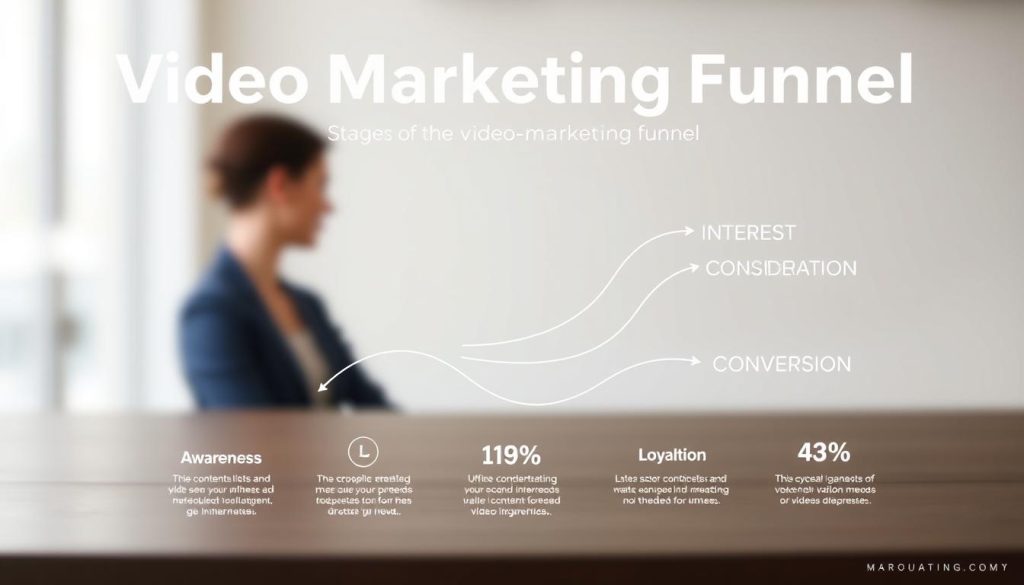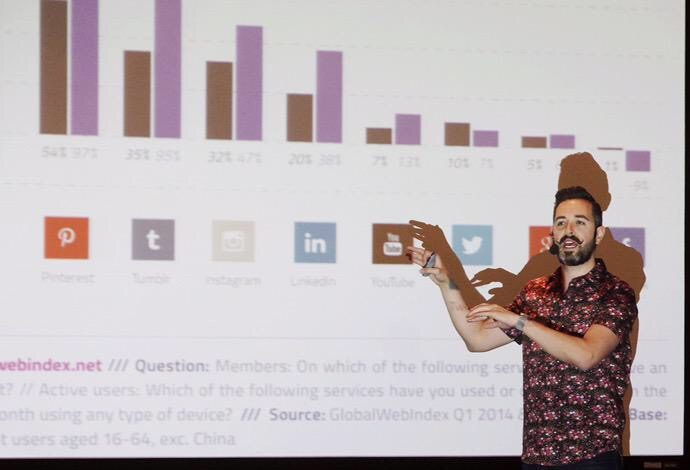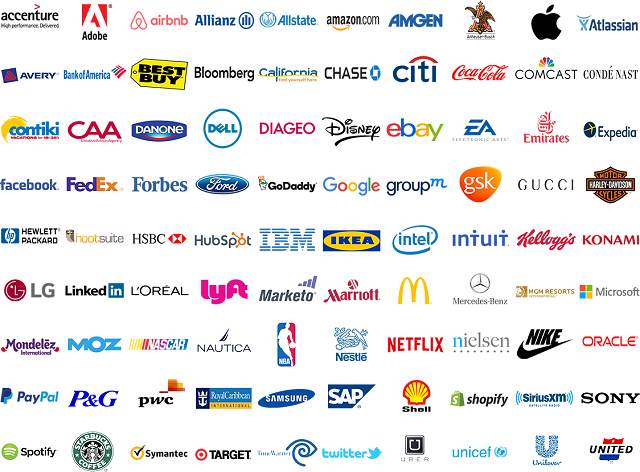Mastering Video Marketing: Essential Tips to Boost Your Business
In today’s digital world, video marketing is key for businesses wanting to grow online. It helps them connect better with their audience.
Companies need to stay ahead by using effective video content. This boosts their brand and how they interact with customers. By adding video marketing tips to their plans, they can tell stories that hit home with their viewers.
Key Takeaways
- Understanding the importance of video marketing in digital strategy
- Learning how to create engaging video content
- Discovering ways to measure the success of video marketing campaigns
- Exploring the role of video marketing in enhancing brand visibility
- Identifying best practices for integrating video marketing into overall marketing plans
The Power of Video Marketing in Today’s Digital Landscape
In today’s world, video marketing is key to grabbing people’s attention. As the digital world keeps changing, businesses look for new ways to connect with their audience. They want to stand out in a busy market.
Why Video Content Dominates Consumer Attention
Video content grabs attention because it’s engaging and immersive. It can share complex info in a simple way, making it shareable and memorable. Effective video content strategies mean knowing what your audience likes and making content that speaks to them.
Key Statistics That Prove Video Marketing’s Effectiveness
Video marketing’s success is clear from the numbers. For example, video can boost website conversion rates by up to 80%. Also, 85% of businesses say video has brought more website visitors. These facts highlight the need to use video content strategies to grow your business and keep customers interested.
Understanding Your Audience: The Foundation of Successful Video Marketing
Knowing your audience well is key to successful video marketing. You need to know who watches your videos, what they like, and how they act online. This knowledge helps you make content that speaks to them.
Creating Viewer Personas for Targeted Content
Creating viewer personas is a vital step. A persona is a detailed profile of your ideal viewer. It includes their demographics, interests, and online behaviors. To make effective personas, consider the following:
- Identify your target audience’s age, location, and occupation
- Research their interests, hobbies, and online behaviors
- Analyze their pain points and how your content can address them
By creating accurate personas, you can tailor your content to meet your audience’s specific needs. This increases engagement and conversion rates.
Analyzing Viewer Behavior and Preferences
Understanding how your audience interacts with your content is crucial. Use tools like YouTube Analytics to learn about viewer behavior. This includes watch time, engagement rates, and where viewers drop off.
Applying YouTube SEO techniques can also boost your video’s visibility. This means optimizing titles, descriptions, and tags with relevant keywords. Also, make sure your video content is high-quality and engaging.
Developing a Comprehensive Video Marketing Strategy
To succeed in video marketing, businesses need a solid strategy. This strategy must match their marketing goals.
Setting Clear Goals and Objectives
Clear goals are key to a good video marketing plan. You should know what you aim to do with your videos. This could be boosting brand awareness, getting more website visits, or creating leads. Specific, measurable, achievable, relevant, and time-bound (SMART) objectives will help guide your video making and sharing.
Aligning Video Content with Your Brand Identity
Your videos should show your brand’s personality and values. This makes your brand look strong and trustworthy. Think about how your videos fit into your brand’s overall plan. Use the right tone, style, and messages. Staying up-to-date with social media video trends keeps your content fresh and interesting.
Creating a Sustainable Content Calendar
A content calendar is vital for planning your video content. It keeps things consistent and avoids last-minute rushes. When making your calendar, think about themes, where you’ll share your videos, and how to engage your audience. A good calendar helps you stay on course and adjust to new social media video trends.
- Plan content around key events and holidays
- Use a mix of promotional, educational, and fun content
- Keep checking and tweaking your calendar based on how it’s doing
Essential Video Marketing Tips for Immediate Business Growth
In today’s digital world, video marketing is key to success. Businesses need to make impactful videos that speak to their audience.
Crafting Compelling Stories That Connect
Every successful video campaign starts with a great story. Storytelling helps brands connect emotionally with their audience. This builds a strong, meaningful bond.
By telling stories that show the value of their products, businesses grab viewers’ attention. This drives engagement and interest.
Optimizing Video Length for Maximum Engagement
The length of a video matters a lot. Short, concise videos work well on sites like Instagram and TikTok. But, the best length varies by content and platform.
It’s important to try different lengths and see what works best for your audience.
Incorporating Strong Calls-to-Action
A good call-to-action (CTA) is crucial. It tells viewers what to do next, like visit a website or buy something. Clear, strong CTAs boost conversion rates and help meet marketing goals.
Video Production Guidelines for Professional Results
Creating top-notch videos is key for businesses wanting to grab their audience’s attention. It’s all about knowing the basics of equipment, lighting, and sound. Also, deciding whether to do it yourself or hire pros is important.
Equipment Essentials for Different Budget Levels
The right tools are vital for making great videos. Depending on your budget, you have many choices.
Camera and Smartphone Options
When it comes to cameras, you can pick from high-end DSLRs to smartphone cameras. This gives you flexibility based on your budget and needs.
Microphone Recommendations
Quality sound is as crucial as good video. Lavalier and shotgun microphones are top picks for clear audio.
Affordable Lighting Solutions
Good lighting doesn’t have to break the bank. Softbox and ring lights can help soften shadows and improve video quality.
Lighting and Audio Best Practices
To get top-notch video and sound, follow some key practices. Use natural light when you can, choose quality microphones, and keep an eye on audio levels to prevent distortion.
DIY vs. Professional Production: When to Invest
Choosing between DIY and hiring pros depends on your project’s complexity, budget, and goals. DIY is great for simple tasks, but for big marketing campaigns or high-end videos, go pro.
Understanding video production basics and making smart choices about equipment and methods can help businesses make engaging videos. These videos can connect with your audience and help your business grow.
YouTube SEO Techniques to Maximize Visibility
To stand out on YouTube, you need to know SEO. With so much content uploaded every day, making your videos easy to find is key. This ensures they reach the right people.
Keyword Research for Video Content
Good keyword research is the base of a strong YouTube SEO plan. It’s about finding the words people use to look for videos like yours. Tools like Google Keyword Planner, TubeBuddy, or VidIQ help find the right keywords.
Put these keywords in your titles, descriptions, and tags. This makes your video easier to find.
Optimizing Titles, Descriptions, and Tags
It’s important to make your video’s metadata clear. This helps YouTube know how to rank your video. You should have catchy titles, detailed descriptions, and the right tags.
Title Optimization Formulas
Use formulas like “How to [Achieve a Desired Outcome]” or “Top [Number] [Topic] Tips” for your titles. They make your titles more interesting and helpful.
Description Structure and Keywords
Make your descriptions clear and include your main keywords. The first few lines should grab viewers’ attention.
Strategic Tag Selection
Pick tags that match your video and include different versions of your keywords. This helps YouTube understand your video’s context.
Leveraging YouTube Analytics for Growth
YouTube Analytics shows how your video is doing. It tracks views, watch time, and how long people stay. Use this info to see what works and what doesn’t.
Try to get more people to watch longer and engage more. YouTube likes videos that keep viewers interested.
Social Media Video Trends and Platform-Specific Strategies
In the fast-paced world of social media, knowing how to use each platform’s video features is key. This knowledge helps businesses succeed in their marketing efforts. It’s all about understanding the unique video options each platform offers.
Instagram and TikTok: Short-Form Video Mastery
Instagram and TikTok have changed the game for short videos. They have huge audiences and formats that grab attention. This makes them perfect for brands to reach out to their followers.
Reels vs. TikTok: Format Differences
Instagram Reels and TikTok both focus on short videos, but they’re different. TikTok is all about fun, creative videos. Instagram Reels, however, are more polished and focused on brands.
Hashtag Strategies for Discovery
Hashtags are key to finding videos on both platforms. Using the right hashtags can make your video more visible and reach more people.
Engagement-Driving Content Types
Content that gets people involved, like polls or challenges, is great. It helps build a community around your brand’s videos.
Facebook and LinkedIn: Business-Focused Video Content
Facebook and LinkedIn are great for business videos. Facebook is perfect for all kinds of videos, from ads to tutorials. LinkedIn is best for professional and B2B content, like industry news and leadership videos.
Cross-Platform Video Distribution Strategies
Businesses should share their videos on multiple platforms. This means making each video fit the platform but keeping the brand message the same. Using this strategy can help your brand connect with more people.
Video Content Strategies for Different Marketing Funnel Stages
Creating effective video marketing means making content that meets the needs of each stage in the marketing funnel. Understanding the customer’s journey helps tailor your videos. This approach boosts engagement and conversion rates.
Awareness Stage: Educational and Entertaining Content
At the awareness stage, people first learn about your brand. Educational and entertaining content is key here. It grabs attention and builds your brand’s image. Use explainer videos or brand stories to connect emotionally with your audience.
Consideration Stage: Testimonials and Product Demonstrations
When consumers consider your products or services, they want more details. Testimonials and product demonstrations are great at this point. They offer proof and show the value of what you offer. These videos build trust and credibility.
Decision Stage: Case Studies and Comparison Videos
At the decision stage, people are almost ready to buy. Case studies and comparison videos can tip the scales. They provide solid evidence of your product’s or service’s benefits and how it compares to others.
Video Engagement Tactics That Drive Viewer Action
To get viewers to take action, you need a mix of tactics. It’s important to know your audience and make content that speaks to them.
Interactive Elements to Boost Participation
Interactive parts are key to getting viewers involved. Here are some ways to do it:
- Use polls and quizzes to get people to join in.
- Add call-to-actions (CTAs) to tell viewers what to do next.
- Try live streaming for live chats and interactions.
Adding these interactive bits can really get viewers involved and make them feel part of something.
Community Building Through Video Content
Creating a community around your videos is vital for keeping people interested. Here’s how to do it:
- Stick to a consistent content schedule to keep viewers coming back.
- Ask for user-generated content to make viewers feel like they’re part of it.
- Respond to comments and feedback to build a loyal group of viewers.
By using these strategies, you can build a dedicated group of viewers who love your videos.
Measuring Video Marketing Success: Key Metrics and Analytics
The real value of video marketing shows up in its measurable results. These can be tracked through various key performance indicators. Marketers need to know which metrics are most important for judging campaign success.
Understanding View Counts, Watch Time, and Engagement Rates
View counts, watch time, and engagement rates are key to judging video success. View counts show how many times a video has been seen. Watch time tracks how long viewers watch. Engagement rates, like likes and comments, show how viewers interact with the video.
Connecting Video Performance to Business Outcomes
To really measure video marketing success, we must link it to business results. This means tracking how video content affects lead generation and sales conversions. By studying these links, marketers can improve their strategies to meet business goals.
Calculating ROI for Video Marketing Campaigns
Figuring out the return on investment (ROI) for video marketing campaigns is key. It compares the revenue from video marketing to its costs. Accurate ROI calculations help marketers decide where to invest in video marketing next.
Advanced Video Marketing Best Practices for Competitive Edge
In today’s fast-paced digital world, using the latest video marketing techniques is key to success. As the digital scene keeps changing, businesses must keep up. They need to use new video marketing strategies to stay ahead.
Leveraging Live Video and Streaming
Live video and streaming are getting more popular. They give businesses a chance to connect with their audience live. By using live video, companies can make their viewers feel like they’re part of something special.
Platforms like YouTube Live, Facebook Live, and LinkedIn Live offer many ways for businesses to reach their audience.
Incorporating User-Generated Content
User-generated content (UGC) is a strong tool in video marketing. It lets businesses use their customers’ creativity. By asking users to make content about their brand, companies can build trust and credibility.
UGC can be many things, like customer testimonials, product reviews, and brand stories.
Exploring AR and VR in Video Marketing
Augmented Reality (AR) and Virtual Reality (VR) are changing how businesses talk to customers. By adding AR and VR to their video marketing, companies can make experiences that grab attention. From showing off products virtually to telling stories in a new way, AR and VR open up lots of possibilities.
Conclusion: Building Long-Term Success with Video Marketing
Video marketing is key in today’s digital world. It grabs people’s attention and helps businesses grow. By keeping up with video trends and using the best practices, companies can stay ahead.
To succeed in the long run, you must always update your video marketing plan. Keep an eye on new trends and make sure your content speaks to your audience. This way, you’ll get more views and interactions.
This guide has shown you how to make a strong video marketing plan. It’s all about knowing your audience, making engaging videos, and using the right platforms. Stick to your plan and you’ll see your business grow through video marketing.
FAQ
What is the most effective type of video content for marketing?
The best video content for marketing changes based on who you’re trying to reach and what you want to achieve. Explainer videos, product demos, and customer testimonials are often the most engaging and effective.
How do I optimize my video for YouTube SEO?
To boost your video’s YouTube SEO, start with keyword research. Then, create catchy titles and descriptions. Use relevant tags and promote your video to increase engagement and watch time.
What are the best practices for video production on a limited budget?
For quality video on a tight budget, focus on good lighting and sound. Use a high-quality camera or smartphone. Consider DIY editing software or freelancers for editing.
How can I measure the success of my video marketing campaigns?
Track view counts, watch time, engagement rates, and conversion rates to gauge your video’s success. Use analytics tools to link video performance to business results.
What are the latest trends in social media video marketing?
Short-form video on TikTok and Instagram Reels is on the rise. Live streaming and augmented reality (AR) and virtual reality (VR) in video are also becoming more popular.
How can I repurpose existing content into video format?
Turn blog posts into explainer videos or convert customer testimonials into video case studies. Use existing footage for video summaries or highlight reels.
What are the benefits of using interactive elements in video content?
Interactive elements like clickable links, quizzes, or branching narratives boost viewer engagement. They increase participation and offer a more immersive experience.
How can I distribute my video content across multiple platforms?
Use a cross-platform strategy for YouTube, Facebook, Instagram, LinkedIn, and more. Tailor your content to each platform’s unique features and audience.
What are the key considerations for creating a video content calendar?
Plan your video content calendar with marketing goals, target audience, and themes in mind. This ensures consistency, efficiency, and aligns with your marketing strategy.
How can I leverage user-generated content in my video marketing strategy?
Encourage customers to create and share videos featuring your brand. Showcase this content on your website, social media, or ads to leverage user-generated content.





































No comments